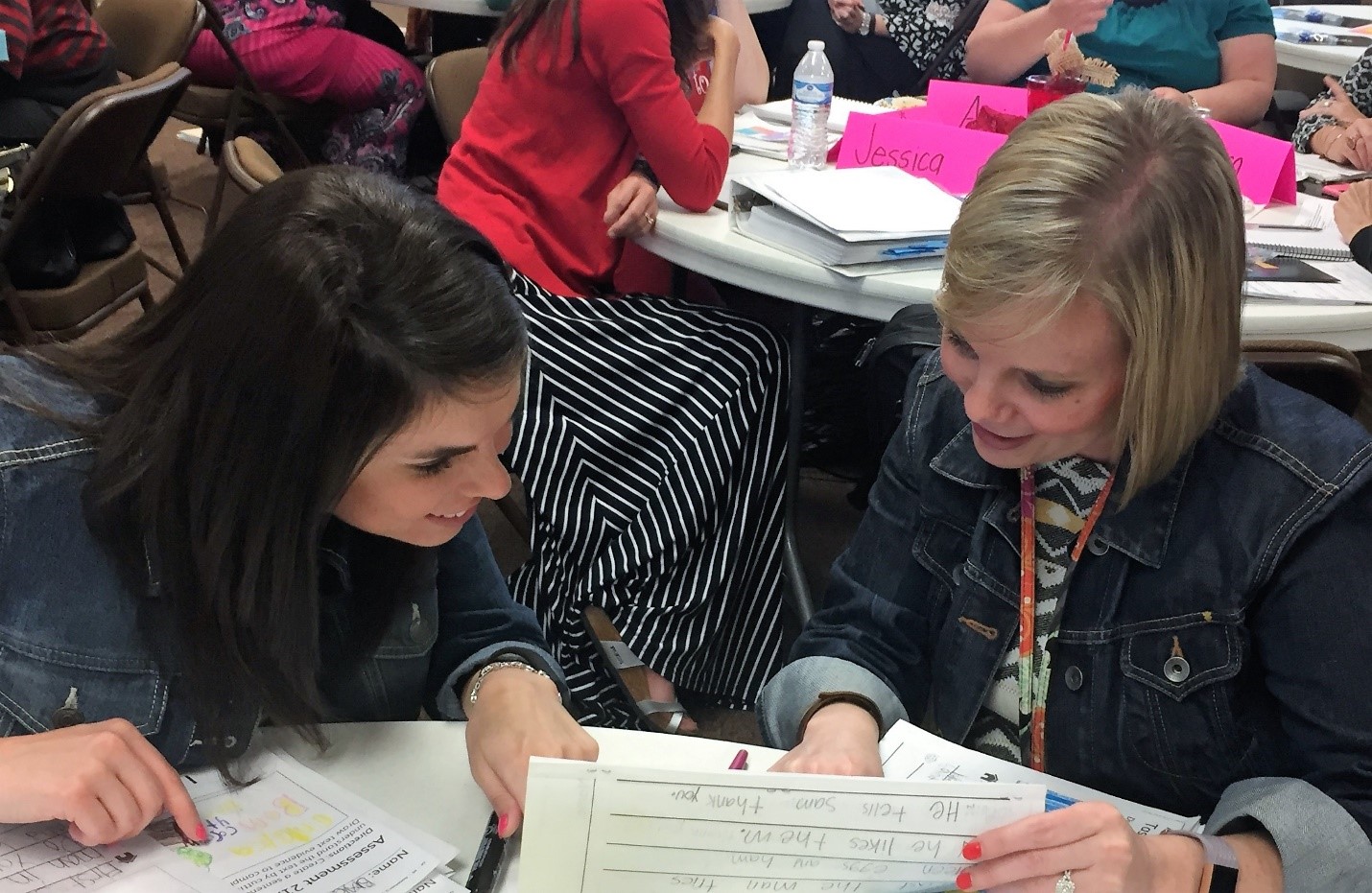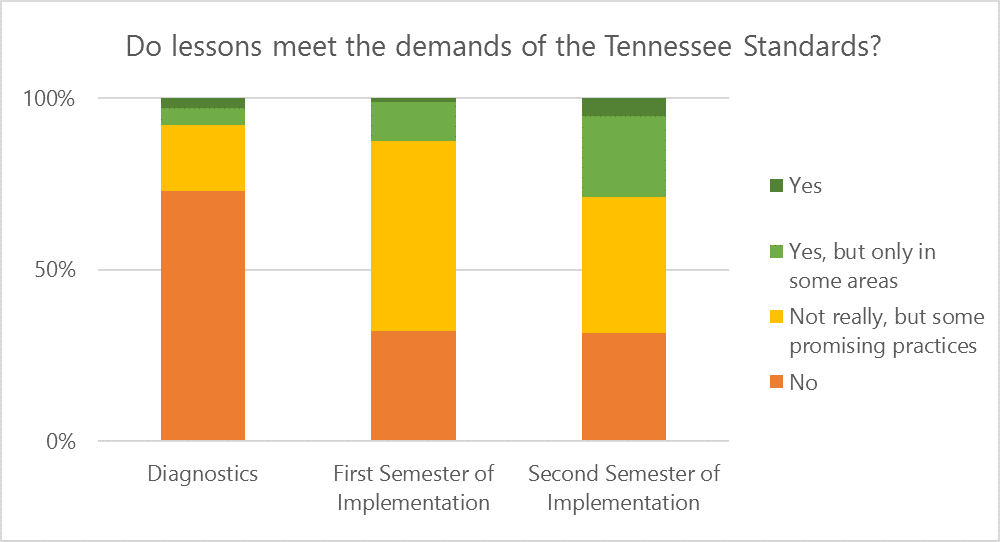In districts across Tennessee, exciting things are happening in K-2 literacy:
• In Lauderdale County, special education students in kindergarten are flourishing in conversations about fine art, discussing how human progress can change a landscape over time.
• In Loudon County, second-graders are talking about the Trail of Tears in a unit about westward expansion, using vocabulary words like “encountered,” “insisted,” and “relocate.”
• And in Jackson-Madison County, first-grade students are identifying how different folktales from Japan, Europe, and America have similar messages across cultures.
 What’s behind these great moments? In each of these districts, teachers are trying out new instructional materials to support students’ reading and listening comprehension. So far, they’re seeing lessons that better reflect the demands of the Tennessee English language arts (ELA) standards and significant development in students’ abilities.
What’s behind these great moments? In each of these districts, teachers are trying out new instructional materials to support students’ reading and listening comprehension. So far, they’re seeing lessons that better reflect the demands of the Tennessee English language arts (ELA) standards and significant development in students’ abilities.
Each of these districts is part of LIFT Education, a network of 12 innovative school systems across Tennessee. A year ago, these districts identified K-2 literacy as a common area for collaboration. After engaging in an instructional diagnostic process with TNTP, the network decided to focus on expanding and improving the time students spent on rich, complex text. In most cases, this meant a focus on read-alouds and the questions and tasks that help students build knowledge and vocabulary.
LIFT districts have a clear theory of action in this work: Real improvements in the classroom happen when teachers are supported in their planning process by strong, standards-aligned instructional materials. This year, teachers in each district are piloting either Core Knowledge, Wit & Wisdom, or both, each of which provides teachers with high-quality units that build students’ knowledge of the world and deep understanding of vocabulary and enduring concepts.
Teacher piloting the new materials see a profound shift:
• 84 percent say they feel more supported in their classrooms as a result of the new instructional materials.
• 87 percent say new instructional materials allow them to deliver higher-quality lessons than what they were doing previously.
• 96 percent say their students’ vocabulary is growing noticeably as a result of these materials.
In addition, classroom visits by TNTP have found significantly more lessons that reflect the demands of the Tennessee standards. In diagnostic visits, only 8 percent of classrooms had lessons that met these demands. But in districts where materials have been used for the entire school year, almost a third of classrooms met some or all of the demands, with another third showing some promising practices, and over 90 percent centered on a high-quality, appropriately complex text.
Perhaps most importantly, these instructional materials are encouraging teachers to raise their expectations for students and increase the rigor in their classrooms. Teachers note that in the past, they may have watered things down for kids who were not on grade level. But now, “The students are really digging deep into the text,” says a teacher in Lauderdale County. “I’m now asking questions that are more challenging for students in a different way. Kids who struggled previously are really shining and doing deep thinking.”
What’s next for these districts? In the fall, all of them will continue to use these new instructional materials, and some will roll them out to more teachers. Says another teacher involved in the early literacy work: “We feel a sense of urgency, and these materials are supporting our teachers and students in amazing ways.”
This SCORE Sheet post was co-authored by Chris Daniels and Courtney Seiler
Chris Daniels is a Project Director with TNTP, where he focuses on early literacy academic strategy with a consortium of districts in Tennessee and cross-LEA collaboration on staffing policies in Washington, DC. Prior to working with TNTP, Chris served at the U.S. Department of Education, at the Bill and Melinda Gates Foundation, and as a seventh-grade math teacher in Philadelphia. He holds a BA in religion from Columbia University, an MS in Education from the University of Pennsylvania, and an MBA from Harvard Business School.


